imagePROFILE Feature
Intelligent Forms Processor (IFP)
INTELLIGENT FORMS PROCESSING (IFP) TECHNOLOGY
Applying the same principles that have been adopted within the laboratory for performance of actual tests, imagePROFILE allows some tasks such as LIMS data entry to be automated through its unique Intelligent Forms Processing (IFP) technology.
More than just data extraction, the IFP processing uses intelligent rules processing to validate and verify test requisition data. If operator intervention is required, the operator is guided through the process. Without IFP, laboratory data entry operators must be highly trained to make decisions based upon each test request.
imagePROFILE’s Intelligent Forms Processing (IFP) technology can be used in conjunction with HUDE to further streamline laboratory data entry functions. It improves the efficiency and accuracy of data entry to the Laboratory Information System (LIS) by electronically detecting and reading information from forms. More than just data extraction, IFP processing uses intelligent rules processing to validate and verify test data and determine how data should be validated and verified. If operator intervention is required, it guides the operator through the process.
IFP has been developed in collaboration with Surity’s clients to ensure that it remains a practical solution for laboratory data entry purposes.
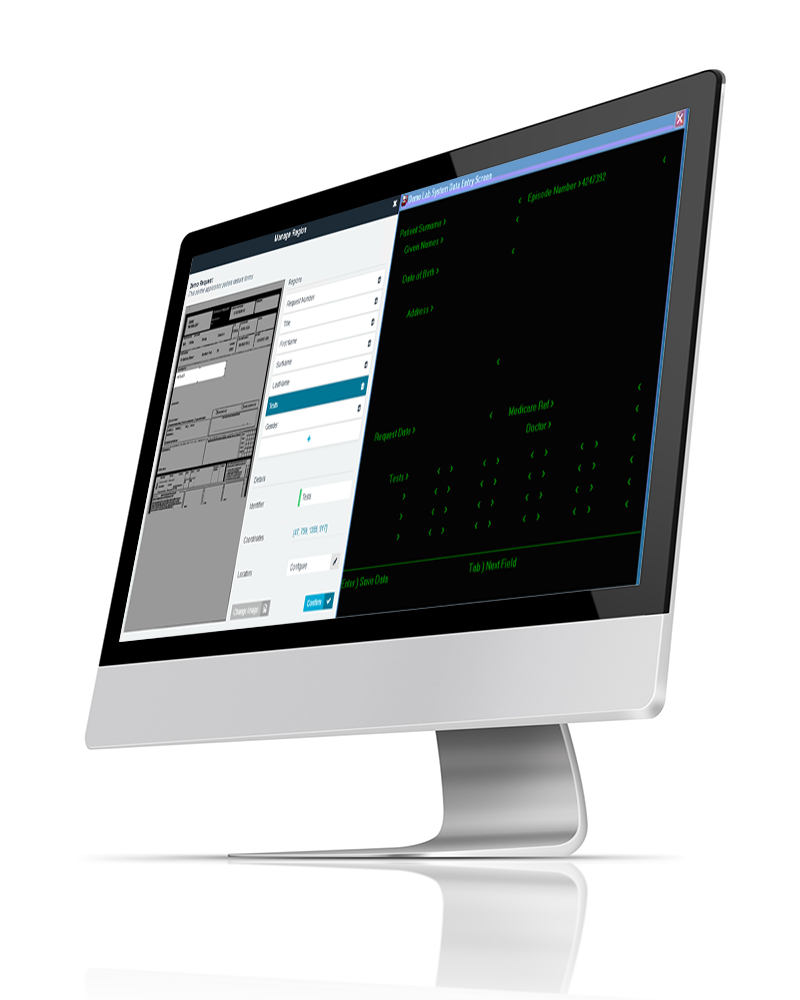
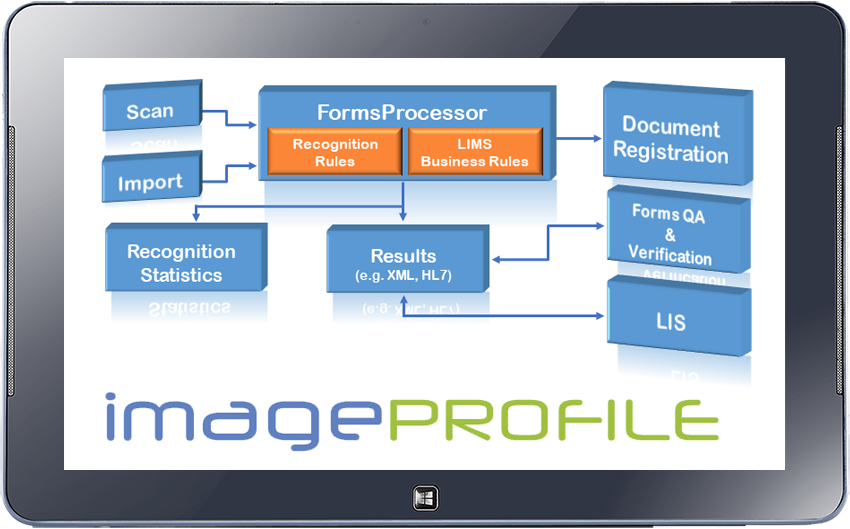
INTEGRATED PROCESS MODEL
IFP consists of the following components:
- Forms Designer, to create form templates and assign processing and validation rules to each field on the form.
- Forms Processing Engine responsible for extraction and recognition of form data.
- Rules Engine to process extended business regarding test, patient or doctor data.
- Forms Correction to allow operators to efficiently correct errors detected by the Forms Processor.
- Data Processor to enable transfer of clean data to the LIS (or other system).
FORMS DESIGNER
The Forms Designer allows form templates to be designed for every document type to be managed. Each template defines the form data field zones to be recognised, their associated data elements, validation and processing rules, and the meta data and workflow processing to be applied to the form. Templates are designed and specified through an intuitive graphic interface, that enables recognition zones to be specified using a simple form by example, point and click operation. Once a template is defined, documents are processed against the defined template, generally within seconds.
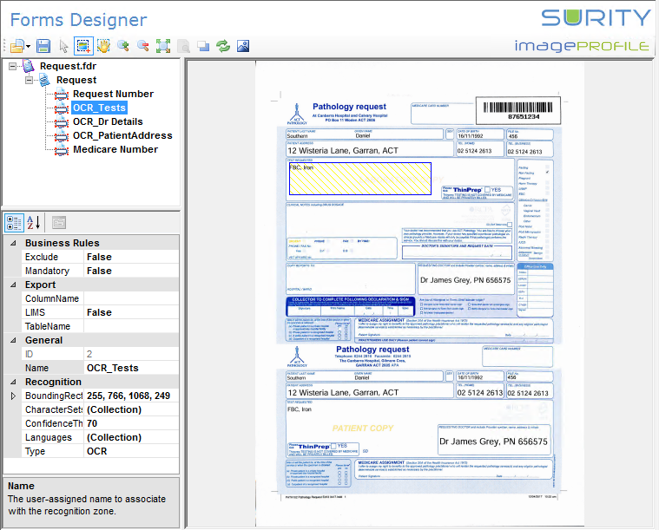
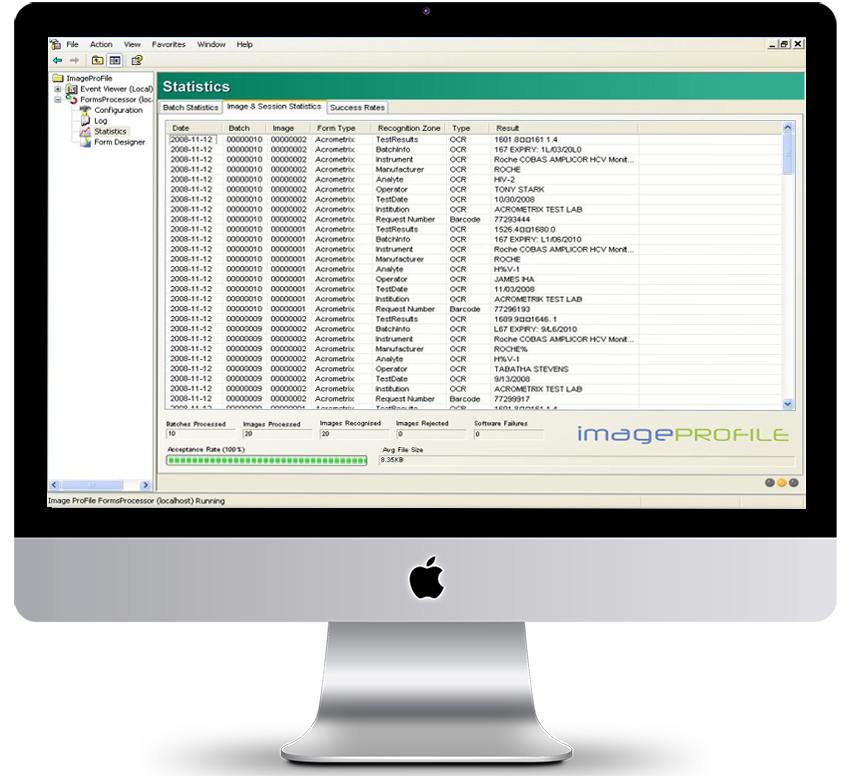
FORMS PROCESSOR
The Forms Process Engine is underpinned by advanced barcode (1D and 2D), Optical Character Recognition (OCR), Optical Mark Recognition (OMR) and Intelligent Character Recognition (ICR) technologies, that may be used to intelligently extract and interpret data.
The Rules Engine is then used to validate extracted data against predefined data validation and processing rules.
FORMS QA & VERIFICATION
Data extraction exceptions are directed to Forms Correction, an integrated data verification process. This integrated app guides data entry operators through verification and correction of data automatically recognised through the IFP process.
Forms Correction is a vital part of the IFP strategy – a poor validation and correction strategy can result in operators spending more time per form correcting data than doing manual data entry. IFP optimises readability and recognition, by applying advanced image clean-up and quality enhancement algorithms to ensure that every image capture is of the highest quality.
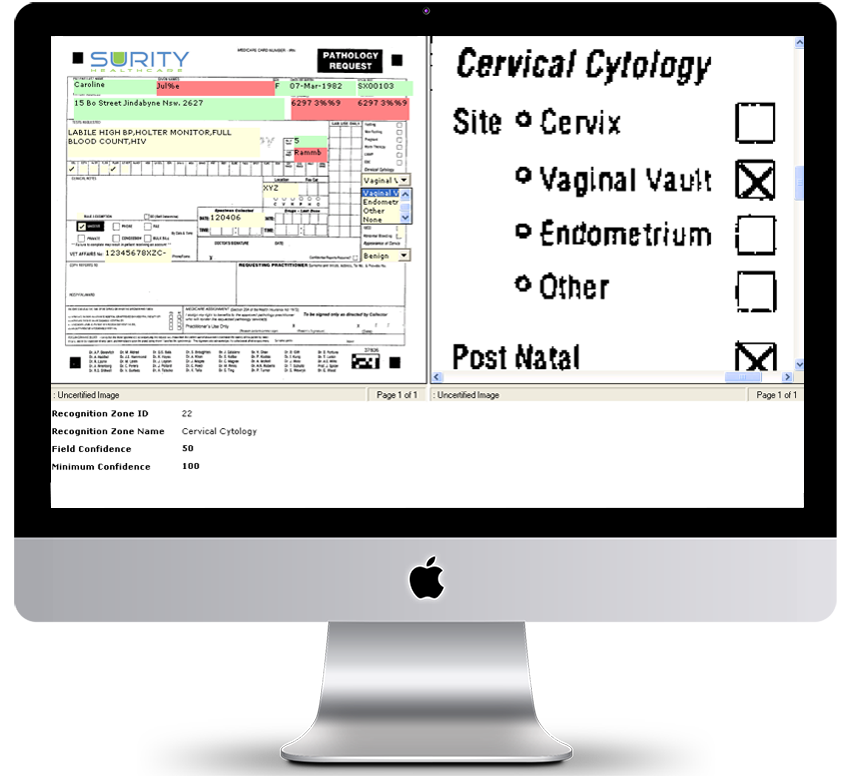

DATA INTER-CHANGE
Once extracted, validated data can be forwarded to any external system, such as a LIS or LIMS, using bi-directional tightly or loosely coupled exchange methods.
imagePROFILE IFP supports common healthcare exchange protocols (e.g. HL7, ASTM) and standards as well as common IT data exchange methods and formats (e.g. XML, JSON, SOAP, REST) that may be elegantly implemented using crossTORQ.
LAB BENEFITS
Data entry operators within the pathology environment require considerable knowledge of pathology to enable them to properly interpret requests from doctors, and correctly process these requests against defined processing rules.
imagePROFILE IFP integrates into laboratory processes to smooth the data entry process, address bottlenecks, and improve throughput and accuracy.
Using imagePROFILE IPF can result in lower training costs for personnel and generally reduced employment costs, as the level of operator skills required is reduced.
